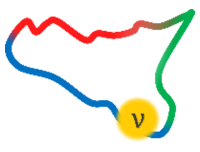Speaker
Description
The study of neutrino interactions with matter has provided significant insights into the properties of neutrinos and the dynamics of weak interactions. One particularly intriguing puzzle is the so-called "Gallium Anomaly", observed in the GALLEX, SAGE, and more recently the BEST experiments, which measure the neutrino capture process on gallium,
νₑ + ⁷¹Ga → e⁻ + ⁷¹Ge, historically used for the detection of solar neutrinos.
Surprisingly, the event rate induced by neutrinos on ⁷¹Ga is systematically lower than theoretical predictions, reaching a discrepancy with a significance of 5σ following the results of the BEST experiment. This anomaly has raised questions about the validity of theoretical cross-section calculations and their implications for physics beyond the Standard Model.
One of the main challenges in calculating the cross section lies in estimating the nuclear matrix element that describes the transition between the initial gallium state and the final germanium state. To compute it, one uses the matrix element of the inverse process—namely, electron capture in germanium—whose rate is experimentally measured.
In my work, I used a numerical code to solve the Dirac equation in a central potential in order to obtain the bound-state electron wavefunctions in germanium. The same code consistently computes the Fermi function, which accounts for the distortion of the outgoing electron wavefunction due to the Coulomb field.
This approach allows testing the assumptions underlying the cross-section calculation—such as the shape of the nuclear charge distribution—leading to a more robust determination and thereby contributing to the theoretical description of the process at the heart of the Gallium Anomaly.

